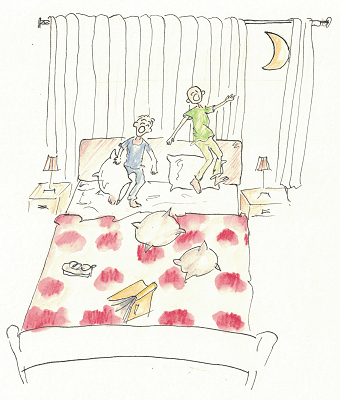DOPO / POI
Vi sono due possibilità anche in inglese:
AFTER
può essere usato come:
preposizione: in questo caso, la costruzione è “after” + nome o gerundio

The children were so excited after the party that they couldn't sleep. [tooltip]I bambini erano così su di giri dopo la festa che non sono riusciti a dormire.[/tooltip]
Ellen returned to her hometown after graduating from college. [tooltip]Ellen è tornata nella sua città natale dopo essersi laureata.[/tooltip]
avverbio: in questo caso va posto alla fine della frase.
Deve essere preceduto da un nome o un altro avverbio. Alcuni esempi possono essere:
a few days after [tooltip]alcuni giorni dopo[/tooltip]
shortly after [tooltip]poco dopo[/tooltip]
soon after [tooltip]subito dopo[/tooltip]
long after [tooltip]molto dopo[/tooltip]
Altri esempi di after come avverbio:
We met on Friday and we went to our first date a week after. [tooltip]Ci siamo conosciuti venerdì e siamo usciti insieme per la prima volta una settimana dopo.[/tooltip]
Jimmy and Mara went to Paris on holiday and shortly after, they moved there! [tooltip]Jimmy e Mara sono andati in vacanza a Parigi e poco dopo si sono trasferiti lì![/tooltip]
THEN
viene invece usato come avverbio, e può essere tranquillamente sostituito con l’avverbio “later”.
I plan to work for this company for two more years and then to move to Australia. [tooltip]Ho intenzione di lavorare per questa compagnia per altri due anni e poi di trasferirmi in Australia.[/tooltip]
She threw his clothes out of the window and then asked him to leave. [tooltip]Ha lanciato i suoi vestiti fuori dalla finestra e poi gli ha chiesto di andarsene.[/tooltip]
ATTENZIONE! Il significato dell’avverbio “then” nelle costruzioni temporali può assumere diverse sfumature, a seconda del contesto in cui viene utilizzato. Sebbene la sua traduzione più letterale possa essere “poi/dopo”, ne esistono altre che è necessario conoscere per non confondersi.
then può essere usato con il significato di “at that time” (allora, in quel momento) quando ci si riferisce ad un momento specifico del passato o del futuro.
My parents divorced when I was a kid. [tooltip]I miei genitori hanno divorziato quando ero un bambino.[/tooltip]
What age where you then? [tooltip]Quanti anni avevi allora?[/tooltip]
I won’t always be here to take care of you. What will you do then? [tooltip]Non sarò sempre qui a prendermi cura di te. Cosa farai in quel momento?[/tooltip]